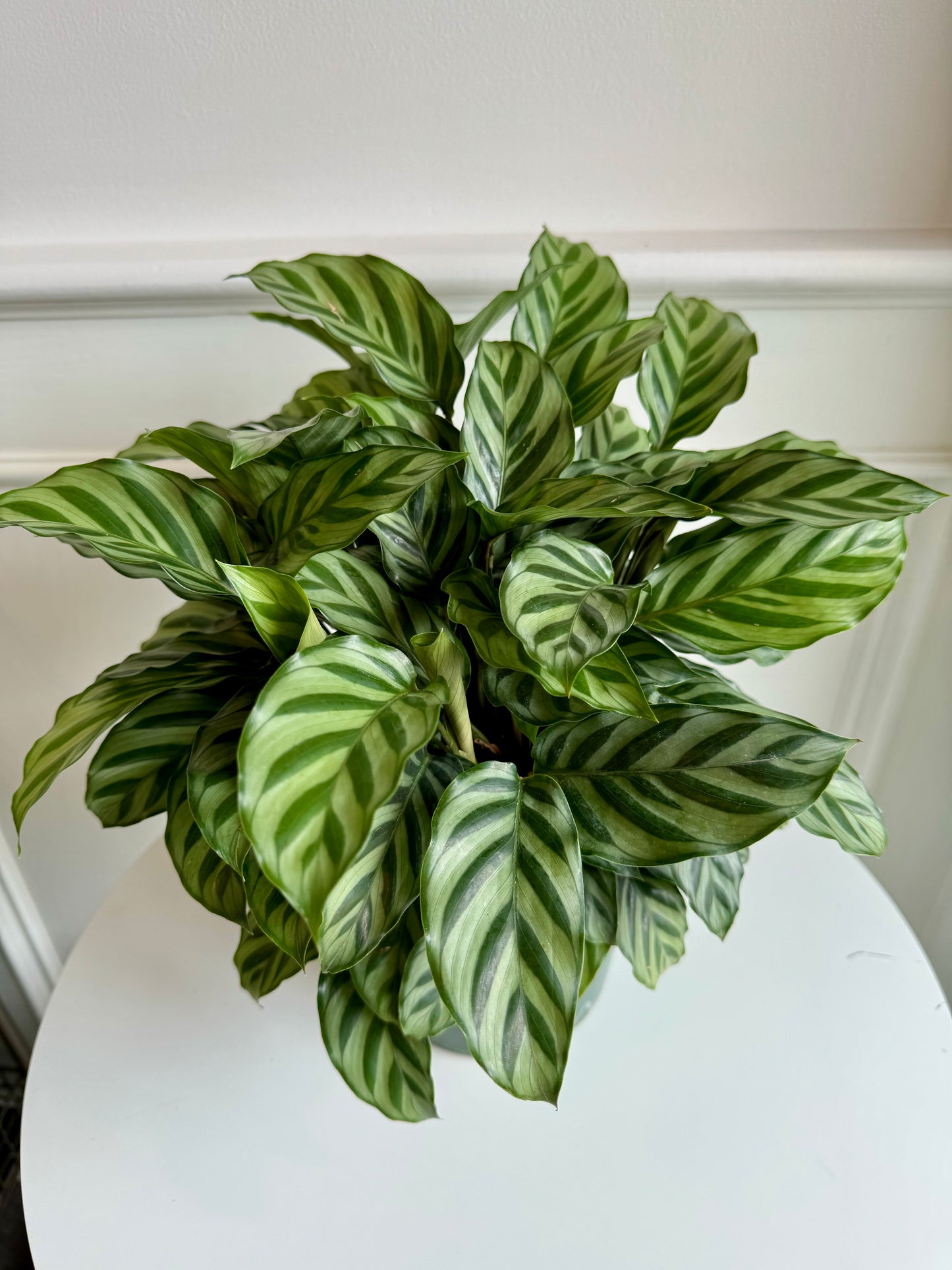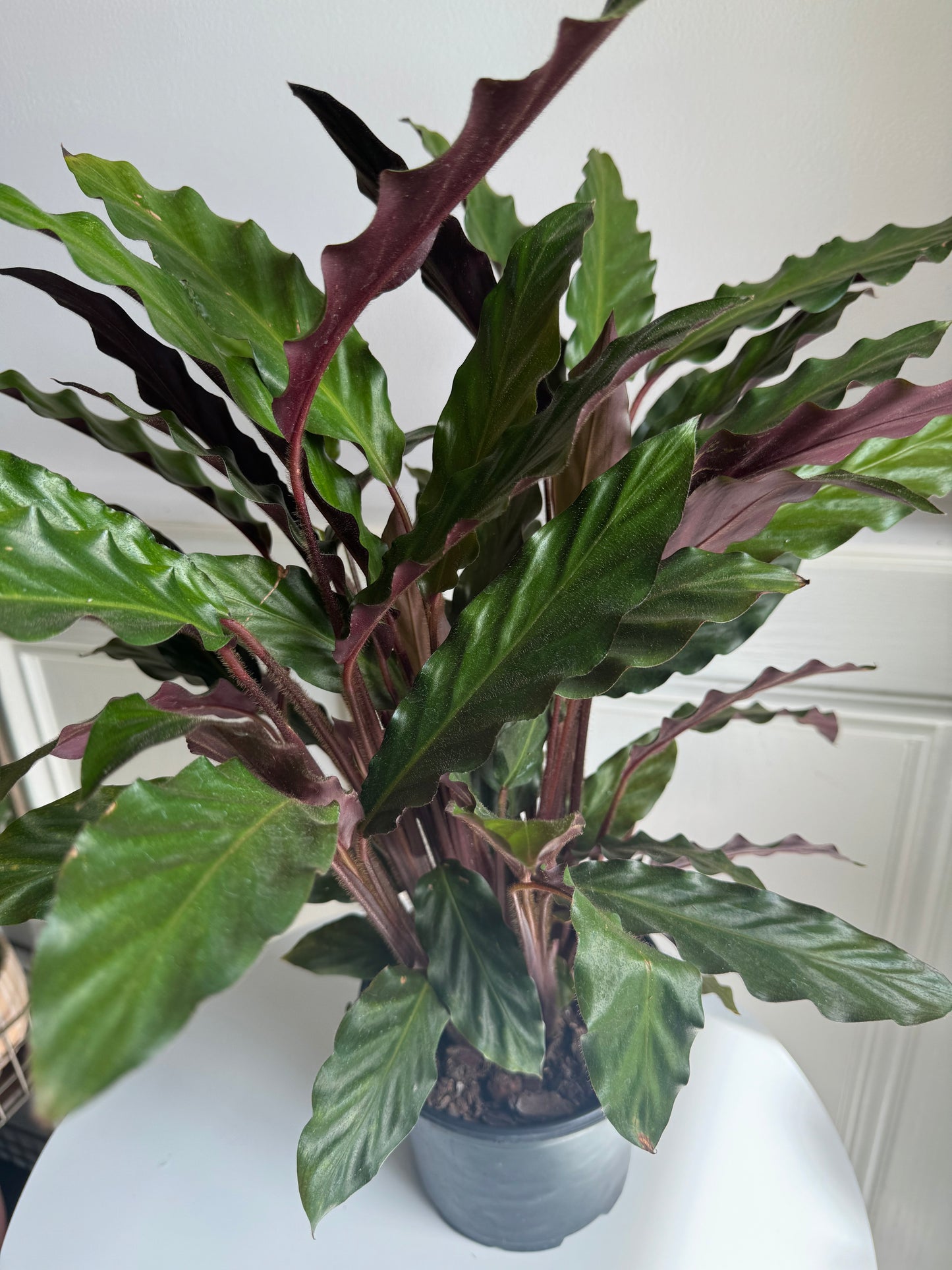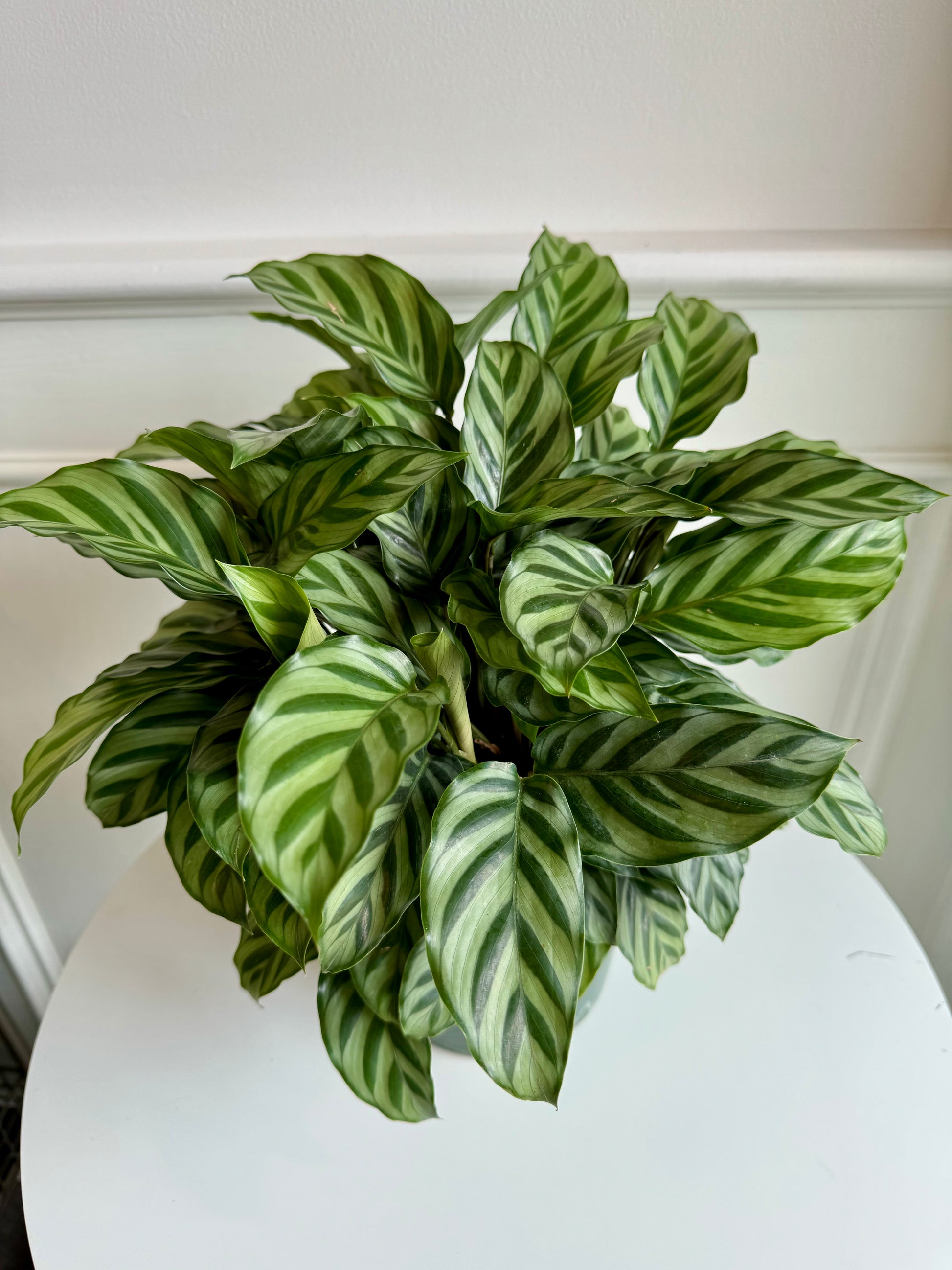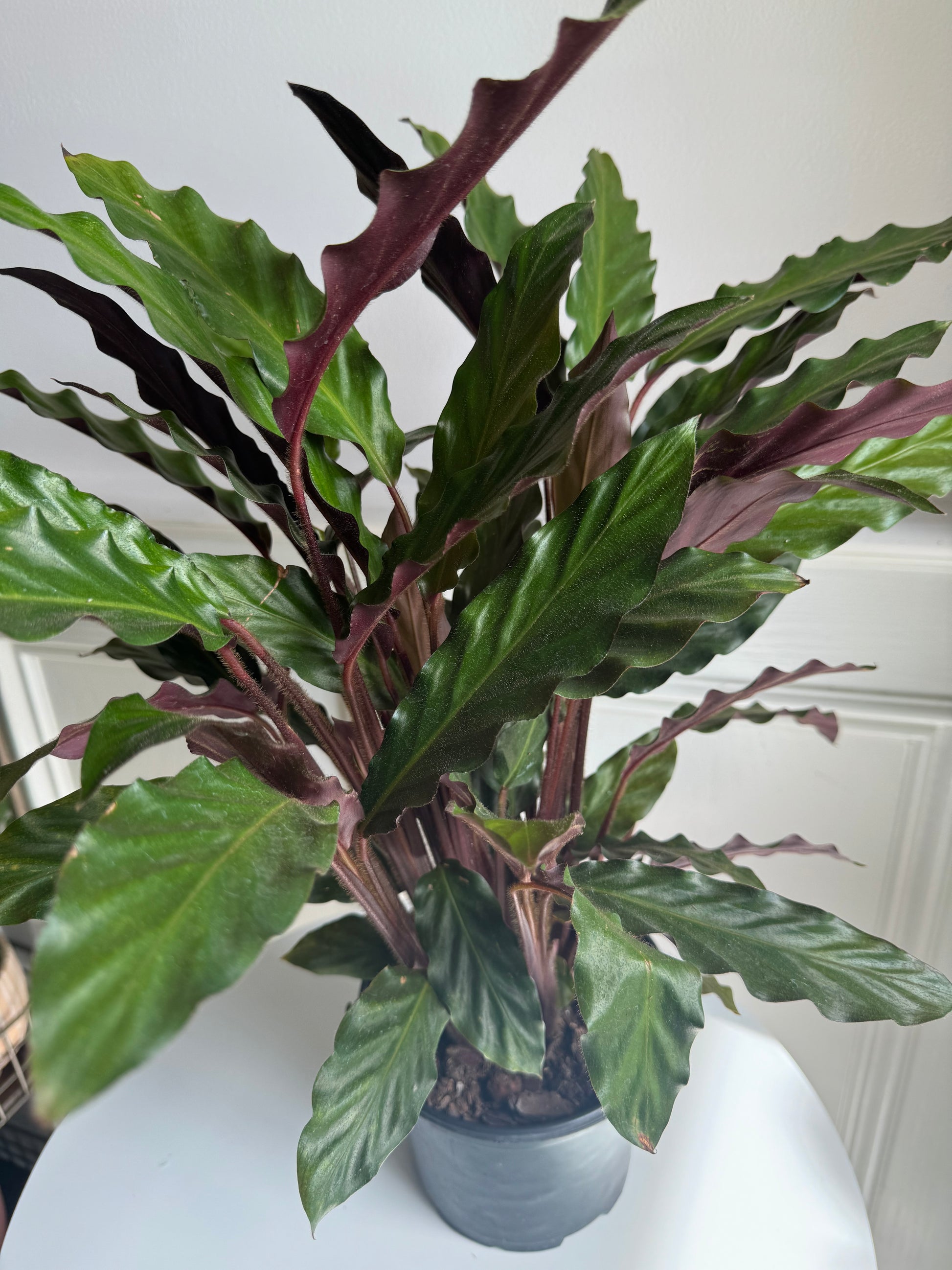Calathea
Calathea
Couldn't load pickup availability
Calathea is a genus of tropical plants known for their stunning foliage and unique patterns. They are native to the tropical regions of the Americas, particularly found in Central and South America. Here's some information about Calathea:
-
Appearance: Calathea plants are prized for their ornamental foliage, which comes in a variety of colors, patterns, and shapes. The leaves are typically large, oval-shaped, and often feature intricate patterns, stripes, or spots. Some common Calathea species include Calathea ornata (also known as Pinstripe Calathea), Calathea roseopicta (Rose-painted Calathea), Calathea lancifolia (Rattlesnake Calathea), and Calathea medallion (Calathea veitchiana), among others.
-
Native Habitat: Calathea plants are native to the tropical rainforests of Central and South America. In their natural habitat, they grow on the forest floor, where they receive filtered sunlight and high humidity levels.
-
Cultivation: Calathea plants are popular choices for indoor gardens and are prized for their ability to thrive in low light conditions. They prefer bright, indirect light but can tolerate partial shade. Direct sunlight should be avoided, as it can scorch the leaves. Calathea plants prefer consistently moist soil and high humidity levels. They benefit from regular misting or placement in a humid environment, such as a bathroom or kitchen. They prefer temperatures between 65°F and 80°F (18°C to 27°C) and should be protected from drafts and sudden temperature changes.
-
Watering: Keep the soil consistently moist but not waterlogged. Water Calathea plants when the top inch of soil feels dry to the touch, allowing excess water to drain away freely from the pot. Avoid overwatering, as this can lead to root rot and other issues. In winter, reduce watering frequency as the plant's growth slows down.
-
Soil: Plant Calathea in a well-draining potting mix rich in organic matter, such as a mixture of peat moss, perlite, and compost. Ensure that the pot has drainage holes to prevent waterlogging, which can lead to root rot.
-
Fertilization: Feed Calathea plants with a balanced liquid fertilizer diluted to half-strength every two to four weeks during the growing season (spring and summer). Reduce or eliminate fertilization in fall and winter when the plant's growth slows down.
-
Pruning and Maintenance: Trim or prune Calathea plants regularly to remove dead or yellowing leaves and maintain their shape. Groom the foliage occasionally to remove dust and debris. Calathea plants are relatively low-maintenance and do not require extensive pruning.
Share




